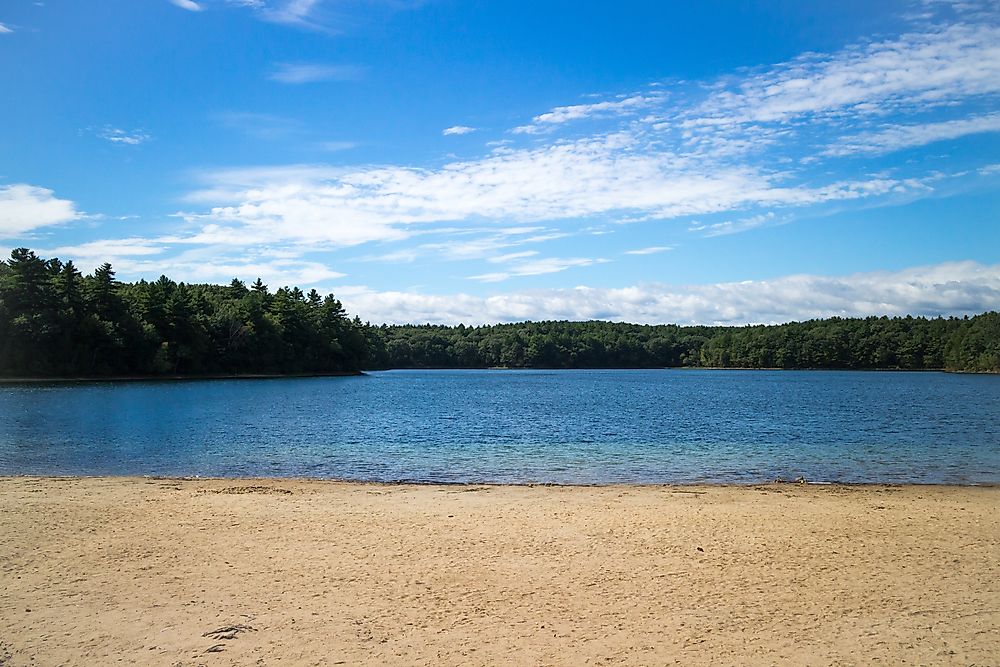Types Of Lakes Formed By A Glacier

Glaciers dramatically alter the landscape of a place. When a glacier retreats, both erosional and depositional glacial landforms become visible on the surface over which the glacier had once moved. Glacial waterbodies are also left behind as a reminder of past glacial action. These include kettle lakes, tarns, moraine-dammed lakes, and many others.
What Is A Glacial Lake?
Glacial lakes are formed after the melting of glaciers. These lakes are formed in depressions or holes created on the surface of the land by glacial erosion. When such depressions fill up with water, lakes are formed. The water in glacial lakes is usually sourced from melting ice left behind by a retreating glacier or rainfall. Landscapes containing glacial lakes usually feature several other glacial landforms like drumlins, moraines, eskers, etc. The Lake District of England is an example of one of the most spectacular landscapes featuring numerous glacial lakes.
Special Types Of Lakes Formed By Glaciers
Kettle Lakes
Kettle lakes are formed in depressions in glacial outwash plains. Such plains are formed by sediments deposited by the meltwater of glaciers, usually at the terminus of the glaciers. Glacial calving often leads to the formation of such lakes. When a detached mass of ice from the glacier gets embedded or partly lodged in the glacial outwash drift, the ice eventually melts to result in the formation of a lake. The depth of the lake increases with the greater accumulation of outwash sediments around the depression. The size of the kettles ranges anywhere from 5 m to 13km in diameter. The lakes can have depths of up to 45 m. Most of these lakes are circular in shape. Kettles are either found singly or in groups. Kettle Lakes are common in the Yamal Peninsula.
Tarns
A tarn is small mountain lake that is located in a cirque (a steep-walled amphitheater-shaped landform formed at the mouth of a valley glacier). In some places like Northern England, the term tarn is used in a broader sense to refer to all ponds in Northern England’s upland areas. However, in glaciology, it refers to a lake left behind by a retreating glacier. The process of overdeepening usually leads to the formation of these lakes. Tarns can be seen in the Tatras Mountains in Slovakia.
Paternoster Lakes
A paternoster lake refers to one of the lakes in a series of glacial lakes that are connected to each other by either a single stream or a network of braided streams. Recessional moraines usually lead to the formation of such lakes. The lakes are named so due to their resemblance to beads on a string or a string of rosary beads. Such lakes usually occur in stepped glacial valleys. Such valleys are formed due to differential bedrock composition and subsequent variability in the erodability of the underlying bedrock. Thus, places with harder bedrock form the steps of the valley while those with softer bedrock are eroded to form flat plains. Often, the glacier excavates the softer bedrock to considerable depths to create shallow bedrock basins that are occupied by lakes after the glacier retreats. The three Thornton Lakes located in the North Cascades National Park in the US are classic examples of paternoster lakes.
Moraine-dammed Lakes
This type of lake is formed when a terminal moraine acts as a barrier to the flow of meltwater originating from a glacier. As the water is unable to leave the valley, it accumulates to form a lake. A moraine-dammed lake usually appears in the shape of a ribbon. The Calafquén Lake in Chile and Lake Hāwea in New Zealand are examples of lakes of this type.











